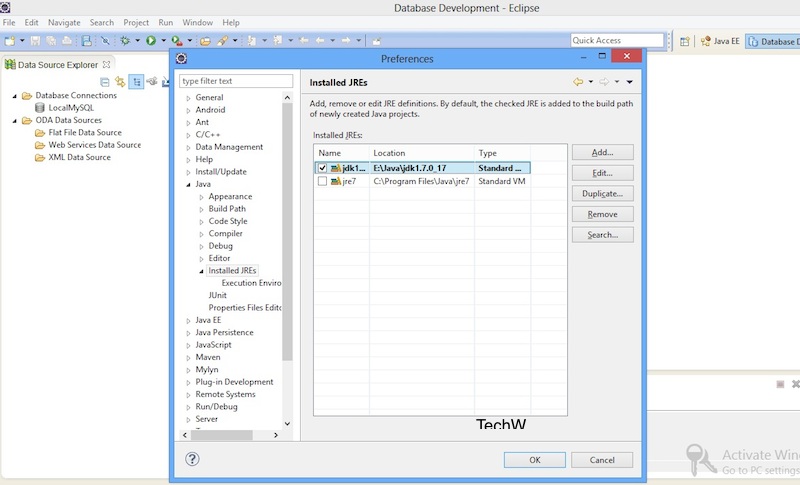

- #Eclipse juno download for windows 8 drivers
- #Eclipse juno download for windows 8 android
- #Eclipse juno download for windows 8 windows 8.1
#Eclipse juno download for windows 8 drivers
#Eclipse juno download for windows 8 android
Then, download the Android SDK separately from here, and ADT here to build a new development environment to test AVD.īUG: The issue you're facing could also be related to this unresolved Issue 28601. Lastly, if it still doesn't work, then dump the Eclipse Juno + Android bundle and download Eclipse Kepler or Luna separately from here. Note: Substitute with the actual name of the AVD you want to start. In the command prompt, navigate to /android-sdk/tools/ directory.In Windows, open a command prompt and Run as Administrator.For the AVD, change the Device option to use WVGA resolution (less than 1280x800) instead of WXGA.UPDATE 2: If your AVD still crashed after trying the above fixes, then try this: In Eclipse, you can access the ADB connection timeout option by going to Windows | Preferences | Android | DDMS. The ADB executable is located at /android-sdk/platform-tools directory.Īlso, change the ADB's default timeout to more than five seconds (5000 milliseconds), for example, 30000 milliseconds (30 seconds). The last command will tell you whether your device is connected to ADB or not. UPDATE 1: If your AVD is not started normally, you can try the following commands (repeatedly) to force the ADB server to start: Note: 1MB in Windows means 1,024 kilobytes. IMPORTANT: On Windows, specifying RAM option for an AVD greater than 1MB will not work. Note: You can have multiple JDKs installed on a computer, but your IDE must use JDK v7. The default JDK directory on a Windows computer will be something like "C:\Program Files\Java\jdk1.7.0_67". For example, in Eclipse select Windows | Preferences | Java | Installed JREs and select the JDK installed directory - not the Java Runtime (JRE) directory. Note: Get the Windows 圆4 version for Windows 8.Īfter JDK installation, open your IDE (Eclipse, Android Studio, etc) and direct the IDE to use this new JDK. So, to run Android:ĭownload JDK v7u67 from here. UPDATE 4: When running the AVD with the -verbose option, the emulator crashes after logging emulator: Initializing hardware OpenGLES emulation support with all emulated devices.Īndroid currently does not support JDK v8, you'll need JDK v7 (v7u67). Also, logcat does not even connect to the emulator it seems like the emulator is terminated before it connects to ADB: UPDATE 3: New Gingerbread AVD according to 's specifications: but still no luck running the emulator. UPDATE 2: Gingerbread AVD I made: Also, no info about the AVD in the DDMS console/logs in Eclipse Juno. Also, Genymotion player.exe crashes on startup, but VirtualBox emulator launches (but cannot user input touches without Genymotion player.exe. UPDATE 1: When running a VirtualBox OpenGL test, VBoxTestOGL.exe crashes with the same fatal module and exception code. None of these solutions have worked for me.

This happens with every version of Android, every device, from 128-1024MB RAM I have added libs to PATH, have toggled GPU and snapshot, turned off cameras, edited config.ini file.

#Eclipse juno download for windows 8 windows 8.1
I am running Windows 8.1 Pro, and the IDE I am using is Eclipse Juno. For the past few days I have been trying to get my Android AVD emulator (from the SDK) working, but none of the solutions posted previously have worked for me.


 0 kommentar(er)
0 kommentar(er)
